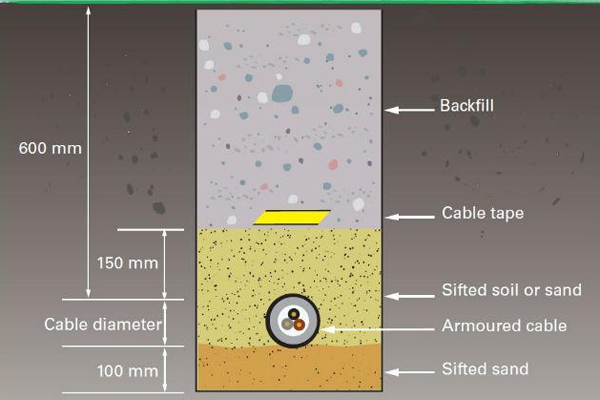
Proper burial depth for electrical cables is a critical aspect of electrical installations. This comprehensive guide explores the world of depth requirements for buried electrical cables, providing insights into its significance, factors influencing depth requirements, NEC guidelines, cable types, installation guidelines, common issues, best practices, and concluding remarks.
Proper burial depth is essential for various reasons:
Electrical Safety: Adequate depth prevents accidental damage, reducing the risk of electrical hazards.
Environmental Protection: It safeguards cables against moisture, corrosion, and physical damage, extending their lifespan.
Code Compliance: Adhering to depth requirements ensures legal compliance and safe installations, avoiding potential legal issues.
Several factors influence the depth at which electrical cables should be buried:
Cable Type: Different cable types (direct burial or conduit) have distinct depth requirements based on their applications.
Soil Conditions: Soil type and composition affect moisture levels, requiring adjustments in burial depth.
Climate: Local climate conditions, including freezing temperatures, may necessitate deeper burial for added protection.
The NEC provides specific guidelines for electrical cable burial depth based on cable type, location, and environmental factors. These requirements standardize safe installations throughout the United States.
Various types of buried electrical cables include:
Direct Burial Cables: Designed for underground use without conduit, these cables require specific burial depths and protection.
Conduit Systems: Cables enclosed in conduits have different depth requirements based on conduit type and soil conditions.
Proper installation practices are critical for meeting depth requirements. This section outlines installation guidelines, including trenching, cable protection, and soil backfilling techniques.
Despite proper installations, issues can arise over time. This section highlights common problems and their solutions, including cable exposure, damage, and corrosion prevention.
Implementing best practices ensures secure and reliable installations. This section provides recommendations for achieving optimal depth, protecting cables, and maintaining safety and longevity.
Understanding depth requirements for buried electrical cables is critical for safety, functionality, and compliance. This guide has provided a comprehensive overview, including the importance of proper burial depth, factors influencing depth requirements, NEC guidelines, cable types, installation guidelines, common issues, best practices, and concluding remarks. Adhering to these guidelines ensures safe and reliable electrical installations, minimizing risks and ensuring the longevity of electrical systems.
Company:Jiukai Special Cable (Shanghai) Co., Ltd.
Contact:Ms. Ding
Tel:0086 021-57186991
Mobile:+86 13585832527
E-mail:daniel@jiukaicable.com
Address:No. 875, Puwei Highway Nanqiao Town, Fengxian District, Shanghai,China